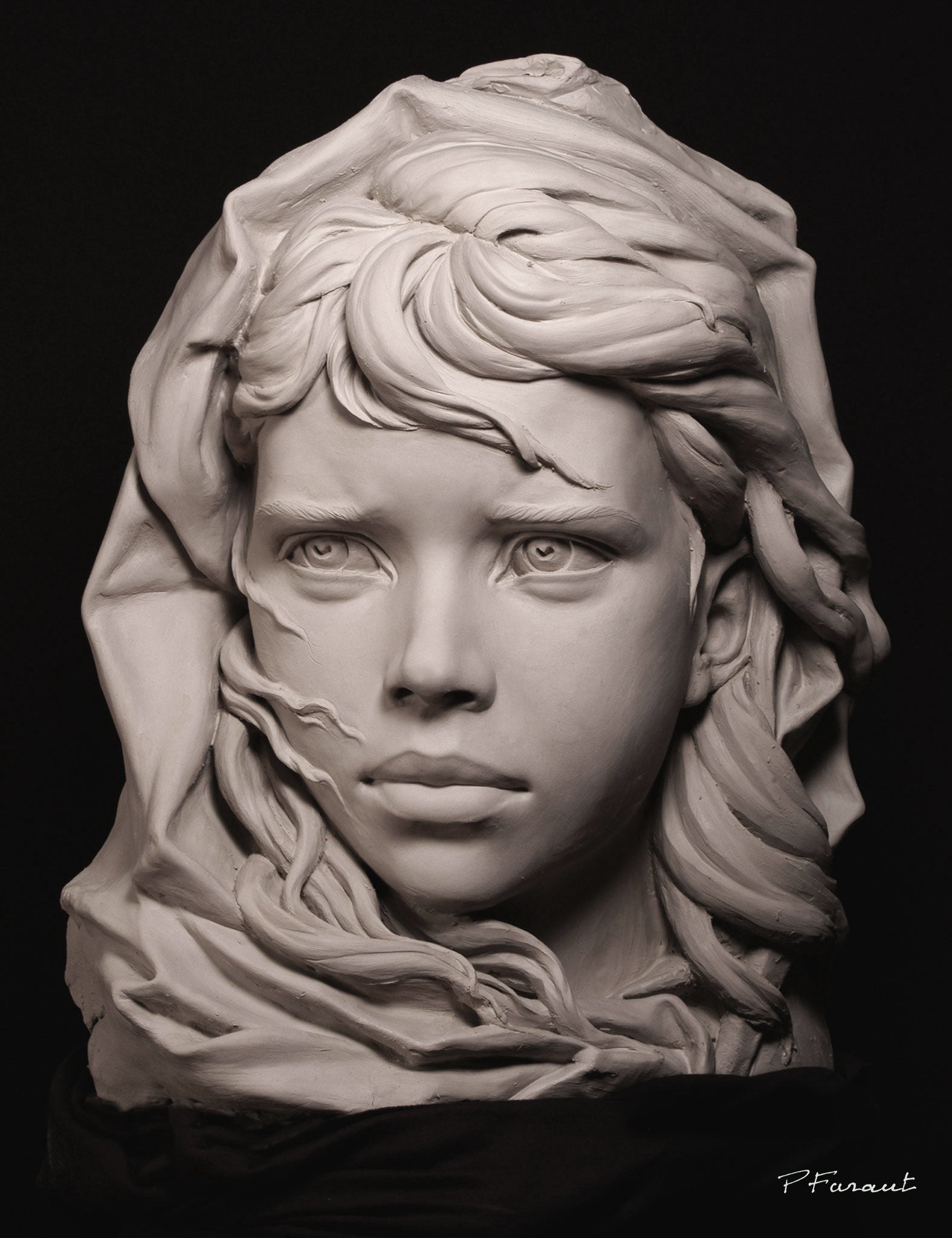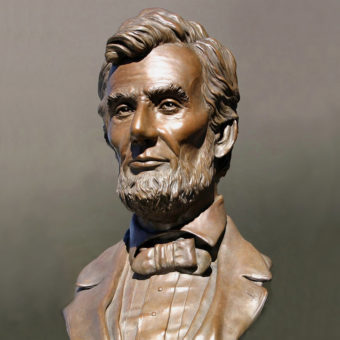Shaping the Human Type: Representations of the Body in Sculpture
Sculpting the Human Form: Portrayals of the Body in Sculpture is a detailed expedition of the imaginative depiction of the body throughout background. This event looks into the numerous strategies, designs, and social point of views that have formed the way musicians have portrayed the human kind in sculpture. From the elegant marble sculptures of old Greece to the detailed masterpieces of the Renaissance, from the ornate and flamboyant Baroque and Rococo sculptures to the avant-garde and abstract expressions of modern-day and contemporary sculpture, this exhibition uses an exciting journey through the advancement of this timeless art type - Robert C Hitchcock Sculptor. By analyzing the varied interpretations and depictions of the body, visitors will obtain a much deeper understanding of the creative, social, and societal influences that have actually formed our assumption of the human type.
Old Greek Sculptures

One of the defining characteristics of Old Greek sculptures is their focus on balance. Each component of the body is meticulously crafted to be symmetrical to the entire, creating a feeling of equilibrium and harmony. The sculptors paid mindful focus to every information, from the placement of muscular tissues to the positioning of arm or legs, making certain that each number showed up both powerful and stylish.
Instead than illustrating the imperfections and defects of the human kind, they looked for to develop an idyllic version of truth. The sculptures commonly depicted gods, athletes, and goddesses, with their bodies formed to excellence.
Renaissance Masterpieces
Proceeding the exploration of the representation of the human kind in sculpture, Renaissance masterpieces even more fine-tune the idyllic idea of appeal, structure upon the unified and in proportion proportions of their Ancient Greek precursors. Throughout the Renaissance period, which covered from the 14th to the 17th century in Europe, musicians looked for to revitalize the timeless suitables of old Greece and Rome. They researched and copied the jobs of the old masters, aiming for a realistic depiction of the body.
His masterpiece, the sculpture of David, exhibits the excellence and poise that became associated with Renaissance art. Standing at over 17 feet tall, the sculpture portrays the scriptural hero in a state of calmness prior to his fight with Goliath.
Another remarkable Renaissance artist was Donatello. His sculpture of Saint George, produced in the early 15th century, showcases the musician's capability to communicate stamina and nobility via the human type. The statuary portrays the legendary dragon-slaying saint in a positioned and positive position, exhibiting a feeling of heroism.
Renaissance work of arts not only commemorated the physical appeal of the human body but additionally shared deeper meanings and emotions. Via their meticulous attention to detail and proficient workmanship, Renaissance sculptors raised the art of sculpture to brand-new elevations, leaving a long lasting legacy that remains to inspire artists to this day.
Baroque and Rococo Sculpture
Baroque and Rococo sculpture exhibits the ornate and extravagant portrayal of the human kind during the 17th and 18th centuries. Artists such as Gian Lorenzo Bernini and Alessandro Algardi created sculptures that communicated activity, frequently showing figures in remarkable postures.
Rococo sculpture, on the various other hand, emerged as a reaction to the grandiosity of the Baroque duration. It embraced a much more fragile and spirited strategy, concentrating on ornamental information and detailed layouts. François Boucher and Jean-Baptiste Pigalle were prominent Rococo artists who crafted works defined by their beauty and charm. They often portrayed figures in sensual and elegant presents, mirroring the laid-back and wayward nature of the Rococo design.
Both Rococo and baroque sculpture placed a great focus on the human form, commemorating its elegance and sharing a variety of feelings - Equine Sculptures. Whether it was the effective and dynamic figures of the Baroque or the elegant and enchanting figures of the Rococo, these sculptures caught the essence of the human experience, leaving a long lasting influence on the art globe
Modern and Contemporary Sculpture
The development of shaping the human kind proceeds in modern-day and contemporary sculpture. Modern sculpture arised in the late 19th century as a feedback to the changing political and social landscape.
In the 20th century, the surge of abstraction and theoretical art brought brand-new opportunities for sculptors. Musicians like Henry Moore and Barbara Hepworth checked out the partnership in between kind and room, creating organic and abstracted figures that tested conventional ideas of representation. Moore's monumental bronze sculptures and Hepworth's sculpted stone works are celebrated for their ingenious usage of products and their ability to evoke a sense of the human body in a non-literal method.
Contemporary sculpture proceeds to press the borders of depiction and discover new products and methods. Musicians like Antony Gormley and Ron Mueck create hyper-realistic sculptures that challenge our perception of the body, while others, such as Louise Bourgeois and Kiki Smith, use the body as a metaphor for cumulative and individual experiences. The human type stays an effective subject in sculpture, providing a platform for artists to explore identification, feeling, and the human problem.
Cultural Perspectives on the Body

In the exploration of forming the human type, the exam of social point of views on the human body reveals a rich and diverse tapestry of analyses and representations. Throughout background, various cultures have actually held unique beliefs and worths relating to the body, causing distinctive imaginative expressions - Robert C Hitchcock Sculptor. These social point of views form the way the human body is shown and regarded in sculpture, showing social standards, religious beliefs, and aesthetic ideals
For instance, old Greek sculptures commemorated the idyllic human kind, emphasizing physical charm and athleticism. In contrast, old Egyptian sculptures concentrated this link on the preservation of the body in the afterlife, depicting figures with idealized features and stiff stances.
In a similar way, social viewpoints on the body in African art typically highlight public identification and spiritual beliefs (Portrait Sculptor). Sculptures from different African cultures illustrate the human body with exaggerated attributes, signifying cultural values and ancestral connections. Native societies in the Americas also have special point of views on the human body, often showing it in a spiritual context and stressing the link between human beings and nature
The assessment of cultural perspectives on the human body in sculpture enables us to acquire understanding into the worths, ideas, and appearances of various cultures throughout background. It highlights the variety of human experiences and the methods which art shows and forms our understanding of the human kind.

Conclusion
Finally, the representation of the body in sculpture has progressed gradually, showing various social perspectives and imaginative movements. From the idealized figures of Old Greek sculptures to the practical and emotive Renaissance masterpieces, and the complex details of Baroque and Rococo sculptures, to the abstract and speculative types of modern and modern sculpture. The human body has actually been a topic of fascination and imaginative expedition throughout background, showcasing the diverse analyses and expressions of the human type.
Shaping the Human Type: Portrayals of the Body in Sculpture is a comprehensive exploration of the imaginative representation of the human body throughout background. From the splendid marble sculptures of ancient Greece to the complex masterpieces of the Renaissance, from the flamboyant and luxuriant Baroque and Rococo sculptures to the progressive and abstract expressions of modern-day and contemporary sculpture, this event uses a fascinating trip through the advancement of this ageless art kind. Artists like Antony Gormley and Ron Mueck produce hyper-realistic sculptures that challenge our understanding of the human body, while others, such as Louise Bourgeois and Kiki Smith, utilize the body as an allegory for personal and collective experiences. The human type remains a powerful subject in sculpture, offering a system for artists to discover identification, feeling, and the human problem.
From the idyllic numbers of Ancient Greek sculptures to the stirring and reasonable Renaissance masterpieces, and the elaborate information of Baroque and Rococo sculptures, to the abstract and speculative kinds of contemporary and contemporary sculpture.